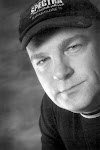The Fibonacci series starts with 0 and 1. The series progresses by adding the last two numbers to create the next number. By extrapolating out, series becomes 0,1,1,2,3,5,8,13, etc. What is interesting about the Fibonacci series is that if you take the ratio of any two sequential numbers in this series (ignoring the first ratio of 1/0 which can't exist), they will always approach 1.618. This ratio is called Phi - not to be confused by the better know Pi which is something else all together. The Greeks used these ratios to build a rectangle the became know as the Golden rectangle.
To build a golden rectangle, you start with a square which is the first ratio in the Fibonacci series, 1/1. Now put an identical square next to it and you have a 2/1 ratio (one side of the box is twice as long as the other). You now have a basic Golden rectangle.
.
The Greeks found references to this pattern in nature and so adopted it to their architecture. Soon, artists recognized the beauty of this Golden Rectangle and began making works of art composed using this concept. By making the frame of the art piece in a 1.618 ratio, artists could define focal points by placing the subject in one of the boxes within the frame. The most impact created in the smallest box - the least impact being in the largest box. Many great works of art exhibit this theory in their compositional elements and I would recommend spending some time investigating.
From the Golden Rectangle came the Golden Mean. The Golden Mean is a way of finding the impact spot in a Phi based rectangle without having to draw out the boxes. To determine the Golden Mean, and hence the highest impact point, draw a straight line from one corner to its opposite corner. The draw another line at right angles from the line you just drew up to an adjacent corner. Where the two lines meet is the same place as the smallest box will be. This is your Golden Mean.








